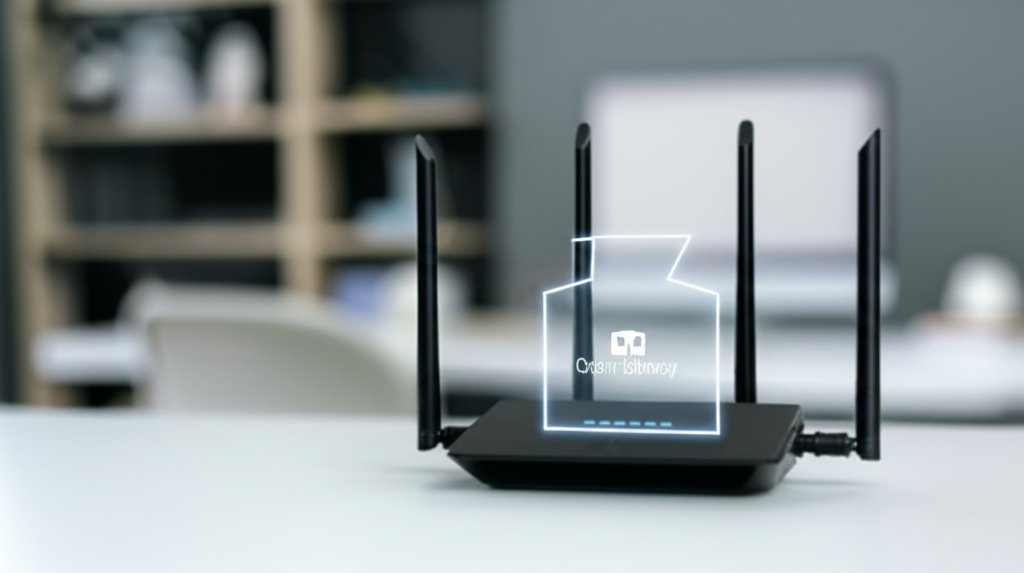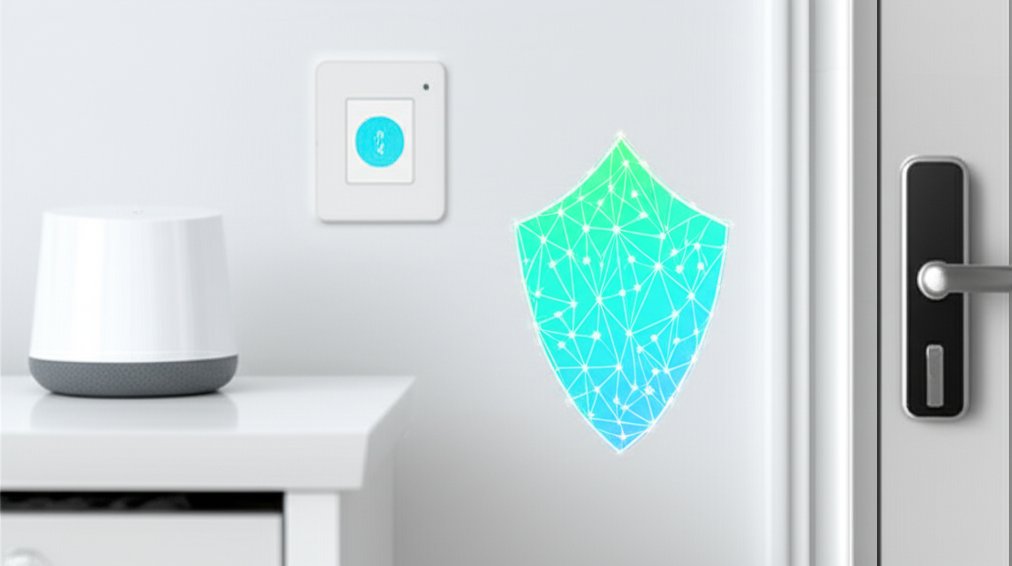Zero Trust Identity: How It Verifies Every User, Device, and App for Small Businesses & Home Users
In today’s interconnected digital world, relying on outdated security approaches is no longer an option. We are all deeply embedded online, whether managing personal finances, running a small business, or simply connecting with loved ones. This means constant interactions with various users, devices, and applications. But in an environment where threats can emerge from anywhere, how can you truly determine who or what to trust?
This is precisely where Zero Trust Identity becomes indispensable. It’s a powerful and proactive security model that fundamentally shifts our mindset from “trust, but verify” to a resolute “never trust, always verify.” For everyday internet users and small businesses alike, this approach is a game-changer, offering a robust, continuously vigilant defense against the relentless and evolving cyber threats we face. This guide aims to demystify Zero Trust Identity, explaining in clear terms how it operates to rigorously verify every user, device, and application you encounter, empowering you to take control of your digital security as part of the Zero-Trust Identity revolution.
Table of Contents
- What is Zero Trust Identity, and why do I need it?
- What does “never trust, always verify” actually mean in practice?
- What exactly does “identity” refer to in Zero Trust?
- How does Zero Trust verify users effectively to enhance my personal security?
- Why is Multi-Factor Authentication (MFA) so crucial for Zero Trust?
- What is “Least Privilege Access,” and how does it help protect me?
- How does Zero Trust ensure my devices are secure before allowing access?
- How does Zero Trust protect my applications and the data they use?
- What are the biggest benefits of Zero Trust Identity for small businesses and home users?
- How can I start implementing Zero Trust Identity principles in my daily life or small business?
- Is Zero Trust a one-time setup, or is it an ongoing process?
- Next Steps: Taking Control of Your Security
Basics (Beginner Questions)
What is Zero Trust Identity, and why do I need it?
Zero Trust Identity is a cutting-edge cybersecurity model that operates on a fundamental principle: no user, device, or application should be inherently trusted, regardless of whether they are inside or outside your traditional network perimeter. Instead, every single access request must be rigorously authenticated, authorized, and continuously verified before any access is granted.
You need it because the “castle-and-moat” security model — where everything inside the network was trusted — is fundamentally broken in today’s mobile and cloud-first world. Once an attacker manages to breach that perimeter (which is increasingly easy with phishing and stolen credentials), they often have free rein to move undetected and compromise sensitive data. Zero Trust prevents this by eliminating implicit trust. It treats every access attempt as if it’s coming from a hostile network, making it exponentially harder for attackers to move laterally, elevate privileges, and ultimately steal your personal or business information. It’s about building a proactive, resilient shield around your digital life, whether you’re managing a small business’s critical data or protecting your family’s online presence.
What does “never trust, always verify” actually mean in practice?
“Never trust, always verify” is the unwavering philosophy at the heart of Zero Trust. It signifies that nothing — and no one — is automatically granted access based on location or previous interactions. Instead, every single access attempt is authenticated, authorized, and continuously validated throughout the entire connection lifecycle. It’s a state of constant, healthy skepticism.
In practice, consider how you protect your home. Instead of just relying on a key (like a password), you might also use a smart lock requiring a fingerprint or a code (Multi-Factor Authentication). Your smart home system might also verify if you’re approaching from an expected route, or at an unusual time. If something seems off — say, an unrecognized person tries to use your fingerprint or attempts to enter your home in the middle of the night from an unfamiliar vehicle — the system would immediately ask for extra verification, deny access, or alert you to a potential threat. This relentless vigilance, applied to every digital interaction, is what keeps your personal and business accounts secure and your data protected from unauthorized access.
What exactly does “identity” refer to in Zero Trust?
In the context of Zero Trust, “identity” is far more expansive than just a person’s username and password. It refers to the unique digital representation of every entity that requests access to a resource. This comprehensive view includes users, devices, and even applications.
For example, your “identity” isn’t just your personal login for online banking; it also includes your work laptop’s specific hardware ID, your smartphone’s unique identifiers, and the specific cloud-based accounting software you use for your business. Each of these identities — the person, the machine, and the software — must be independently and continuously verified. It’s about gaining a holistic understanding of who or what is attempting to access your digital assets, recognizing that each element plays a critical role in your overall security posture. Without this broad definition and rigorous verification of every identity, you’re leaving potential weaknesses and unauthorized pathways for attackers to exploit.
Intermediate (Detailed Questions)
How does Zero Trust verify users effectively to enhance my personal security?
Zero Trust verifies users through a robust combination of strong authentication methods, granular access controls, and continuous monitoring of their activity, moving far beyond simple passwords to build a comprehensive security posture.
First, it mandates Multi-Factor Authentication (MFA), meaning you’ll always use more than just a password, often moving towards passwordless authentication methods. Second, it strictly enforces the principle of “Least Privilege Access,” granting users only the specific permissions they absolutely need to perform a task, and nothing more. Think of it like a library card that only grants you access to the specific sections relevant to your research, not the entire building — protecting the rest from incidental or malicious access. For a small business, this means an employee in marketing won’t automatically have access to sensitive HR or financial records. Finally, your access is continuously re-evaluated based on dynamic factors such as your current location, the health and compliance of the device you’re using, and even your typical behavior patterns. If something looks suspicious — perhaps a login from an unusual country, or an attempt to access data you normally wouldn’t — the system might automatically re-verify your identity, temporarily block access, or alert a security administrator.
Pro Tip: Always enable MFA on every account that offers it. It’s the single best, most impactful step you can take for your personal and business online security!
Why is Multi-Factor Authentication (MFA) so crucial for Zero Trust?
Multi-Factor Authentication (MFA) is not just important for Zero Trust; it’s absolutely crucial because it adds multiple, distinct layers of verification beyond just a password. This makes it exponentially harder for attackers to gain unauthorized access, even if they manage to steal or guess your credentials.
Essentially, MFA requires you to provide two or more different categories of evidence to prove you are who you say you are. This could be:
- Something you know: A password or PIN.
- Something you have: Your smartphone receiving a one-time code via SMS, a code from an authenticator app (like Google Authenticator or Authy), or a physical security key.
- Something you are: A fingerprint scan, facial recognition, or retina scan.
If a hacker successfully steals your password through a phishing email or a data breach, they still won’t be able to log in without also possessing that second factor — your phone, your physical key, or your biometrics. This dramatically reduces the risk of common attack vectors like phishing attacks, credential stuffing, and brute-force attempts, serving as a critical barrier against cybercriminals targeting both your personal accounts and sensitive business data.
What is “Least Privilege Access,” and how does it help protect me?
Least Privilege Access is a foundational security principle within Zero Trust where users, devices, and applications are granted only the absolute minimum necessary permissions to perform their specific tasks, and nothing more. This dramatically limits the potential damage and scope of compromise if an account or system is breached.
To illustrate, imagine your physical keys: you likely carry a key for your front door, but you don’t typically have a master key for every door in your neighborhood, do you? Least Privilege works precisely the same way in the digital realm. For a home user, this means that a photo editing app shouldn’t have access to your contacts or banking information. For a small business, if an employee’s email account is compromised, a hacker with least privilege access couldn’t automatically access your payroll system, customer database, or critical business files. This containment minimizes what we call the “blast radius” of a breach. By limiting access strictly to what’s needed, you ensure that even if an attacker gets a foothold, their ability to move around, steal data, or deploy malware is severely restricted, making your security posture incredibly robust and resilient.
How does Zero Trust ensure my devices are secure before allowing access?
Zero Trust ensures devices are secure by performing continuous health checks and rigorous authentication to verify their compliance with security policies, both before and throughout any access attempt. Every device — from your work laptop to your personal smartphone — is essentially treated as a potential entry point that must prove its trustworthiness.
Before your device can access company resources, or even sensitive personal data, the Zero Trust system will meticulously check its “security posture.” Is its operating system up-to-date with the latest patches? Is antivirus software installed, active, and running the most recent definitions? Does the device show any signs of malware or unusual activity? Is it connecting from a suspicious network? Only if your device passes these comprehensive health checks is it granted access, and these checks often continue throughout the session. For small businesses, this is absolutely vital for securing employee-owned “Bring Your Own Device” (BYOD) phones and laptops, ensuring they don’t inadvertently introduce vulnerabilities into your network, without needing to fully manage the personal device itself. This is a core component of Zero Trust Network Access (ZTNA). Device authentication often relies on digital certificates — unique digital IDs that cryptographically prove your device’s legitimacy and trustworthiness to the network.
How does Zero Trust protect my applications and the data they use?
Zero Trust extends its principles to protect applications by applying least privilege access to them, continuously monitoring their behavior, and ensuring all connections — especially to crucial cloud services — are secure, verified, and authorized.
Just like users and devices, applications themselves are granted only the specific access they need. For instance, a cloud-based marketing automation tool should only have access to your CRM data, not your financial ledgers. Zero Trust systems continuously observe and analyze an application’s behavior. If an accounting app suddenly tries to access employee HR files, or a new, unauthorized app attempts to connect to your central database, the system will flag, challenge, or immediately block that suspicious activity. With the widespread reliance on cloud-based Software-as-a-Service (SaaS) applications, Zero Trust is critical. It extends the “never trust, always verify” approach beyond your physical network, ensuring that data accessed via these apps remains protected, regardless of where the app is hosted or where the user is located. It’s how we ensure that every digital tool you use is operating within its defined boundaries and not becoming a backdoor for attackers.
Advanced (Expert-Level Questions)
What are the biggest benefits of Zero Trust Identity for small businesses and home users?
Zero Trust Identity delivers a suite of powerful benefits, including significantly enhanced security, the ability to enable truly secure remote work, streamlined compliance efforts, unparalleled visibility into access, and ultimately, a substantial reduction in the risk and impact of cyberattacks for both small businesses and individuals.
- Enhanced Security: For a small business, it means drastically reducing your attack surface, providing superior protection against ransomware, data breaches, and phishing attacks. For home users, it means your personal data across banking, email, and social media is far better shielded from compromise.
- Secure Remote Work: It enables your team to work securely from anywhere, on any device, by replacing vulnerable Virtual Private Networks (VPNs) with more robust, identity-aware Zero Trust Network Access (ZTNA).
- Simplified Compliance: Zero Trust streamlines your path to meeting regulatory requirements (like HIPAA, GDPR, or PCI-DSS) by enforcing strict, auditable access controls and logging every access attempt.
- Greater Visibility & Control: You gain a clear, real-time picture of who is accessing what, from which device, and when, allowing for rapid detection and response to anomalies.
- Reduced Impact of Breaches: Should a breach unfortunately occur, Zero Trust’s principle of least privilege and micro-segmentation helps contain it, minimizing the “blast radius” and preventing lateral movement by attackers.
Many cloud-based Zero Trust solutions are now accessible and affordable, making this robust protection available even without a massive IT budget or complex infrastructure, democratizing advanced cybersecurity for everyone.
How can I start implementing Zero Trust Identity principles in my daily life or small business?
Implementing Zero Trust Identity doesn’t have to be an overwhelming overhaul. You can start today by taking practical, foundational steps that significantly strengthen your security posture. Here’s a roadmap:
- Enable Multi-Factor Authentication (MFA) Everywhere: This is arguably your single most impactful step. Activate MFA on all personal accounts (email, banking, social media, shopping) and every business account. Use authenticator apps over SMS whenever possible for greater security.
- Review and Limit Access Permissions (Least Privilege):
- For individuals: Be highly mindful of what permissions you grant to apps on your phone or social media. Regularly audit these settings.
- For businesses: Conduct regular audits of user roles and permissions. Ensure employees, contractors, and even automated systems only have access to the data and applications absolutely essential for their job functions. Remove unnecessary access immediately.
- Keep Devices and Software Updated: This seemingly simple step is critical. Always install updates for your operating system (Windows, macOS, iOS, Android), web browsers, applications, and antivirus software. Patches frequently fix critical security vulnerabilities that attackers actively exploit.
- Consider Cloud-Based Zero Trust Solutions: Explore user-friendly Zero Trust solutions like Zero Trust Network Access (ZTNA) services, Identity Providers (IdP) with strong authentication, or Security Service Edge (SSE) platforms. Many common business tools (e.g., Microsoft 365, Google Workspace, Salesforce) now integrate Zero Trust capabilities that you can configure and leverage without needing a dedicated IT team.
- Educate Yourself and Your Team: The human element remains a crucial factor in security. Train yourself and your employees on common threats like phishing, social engineering, and safe browsing habits. A well-informed team is your strongest defense.
Is Zero Trust a one-time setup, or is it an ongoing process?
Zero Trust is emphatically an ongoing journey, not a one-time fix. The digital threat landscape is dynamic and constantly evolving, meaning your security measures must continuously adapt, improve, and refine to stay ahead of sophisticated attackers.
Think of it like maintaining your physical health: you don’t just go to the gym once and expect to be fit for life. You need a consistent routine, regular check-ups, and adjustments as your needs and the environment change. Similarly, implementing Zero Trust means regularly:
- Reviewing and updating access policies to align with business changes and new threats.
- Monitoring device health checks and ensuring compliance.
- Scanning for and responding to new vulnerabilities and emerging threats.
- Continuously educating users on best security practices.
It’s about fostering a pervasive security culture that prioritizes continuous verification, proactive monitoring, and agile adaptation. The future of security truly is Zero Trust, and its strength lies in consistent vigilance in our ever-connected world.
Related Questions
- How does Zero Trust compare to a VPN?
- Can Zero Trust protect against insider threats?
- What is Zero Trust Network Access (ZTNA)?
Next Steps: Taking Control of Your Security
Zero Trust Identity is far more than just a cybersecurity buzzword; it represents a fundamental, empowering shift in how we approach digital security. By adopting a healthy skepticism and demanding continuous verification for every user, device, and application, you can significantly reduce your vulnerability to modern cyber threats and take proactive control of your digital safety.
Ready to strengthen your digital defenses and begin your Zero Trust journey?
Here are your immediate next steps:
- Start with MFA Today: Make it a priority to enable Multi-Factor Authentication on every single online account that offers it — personal and business. This is your strongest, simplest defense.
- Audit Your Access: For home users, review app permissions on your devices. For small businesses, identify your most sensitive data and then list who (and what devices/apps) absolutely needs access. Start limiting permissions immediately.
- Stay Informed: Follow reputable cybersecurity blogs and resources to stay updated on new threats and best practices. Education is a powerful defense.
- Explore Solutions: Research cloud-based Zero Trust Network Access (ZTNA) providers. Many offer trials or free tiers suitable for small businesses and individuals. Consider how your existing software (like Microsoft 365 or Google Workspace) can be configured with Zero Trust principles.
By taking these concrete steps, you’re not just reacting to threats; you’re building a resilient, proactive defense that empowers you to thrive securely in the digital world.









